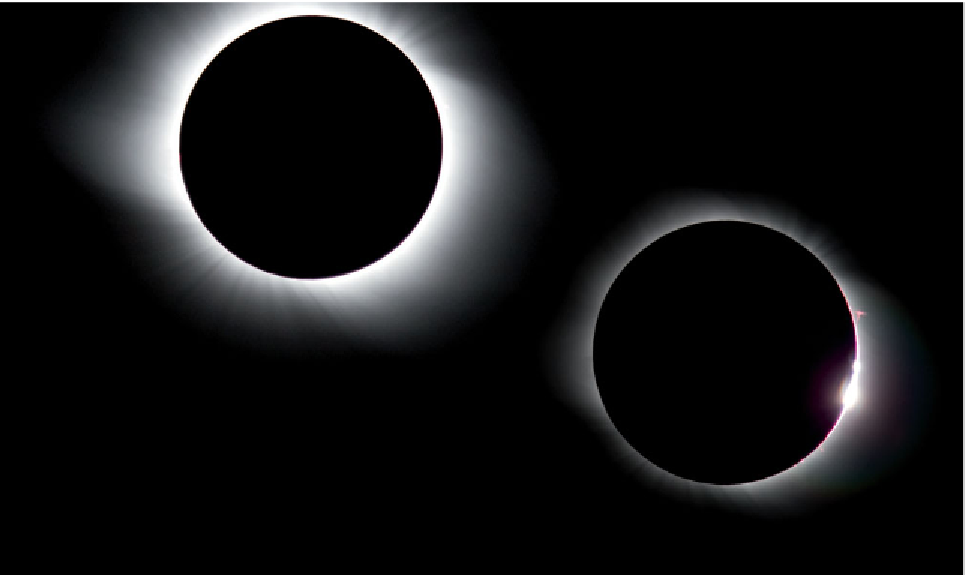Travel Reference
In-Depth Information
Figure 103
The total eclipse of August 1, 2008. The fi rst image shows details of the sun's
corona at the height of the eclipse. I took the second at a faster exposure so that much less
of the corona is visible. In the second picture the sun is just starting to shine through a val-
ley of the moon, and you can see the red lower solar atmosphere. The solar eruptions called
prominences are few, small, and pale in color, because the sun was in a quiet phase at the
time of the eclipse.
the assembled spectators. The Bactrian camel that I had hired for the occa-
sion was unimpressed, but both the Mongolians and the foreign visitors to
this remote corner of their country stared at the sky in fascination until the
sun re-emerged, shining through the valleys on the rim of the moon to give
a sparkling diamond ring ef ect.
We had all been able to gather at this remote place because of a confl u-
ence of science and technology. We had benefi ted both from a precise pre-
diction of the eclipse's path and from the jet planes that had carried us here.
In the space of a single remarkable day we had spanned much of human
culture. We had seen how dogs might have been domesticated by nomads
on the steppes 15,000 years ago, And we had watched the eclipse unafraid,


